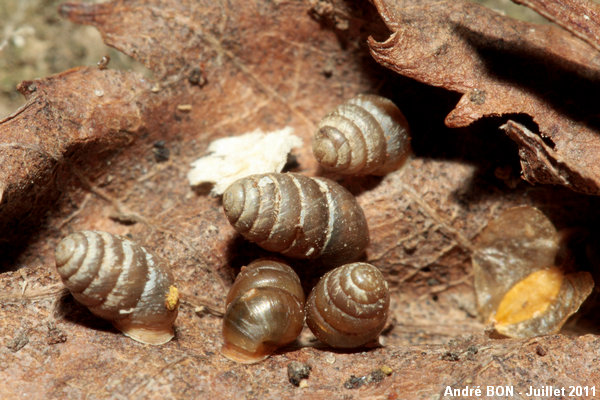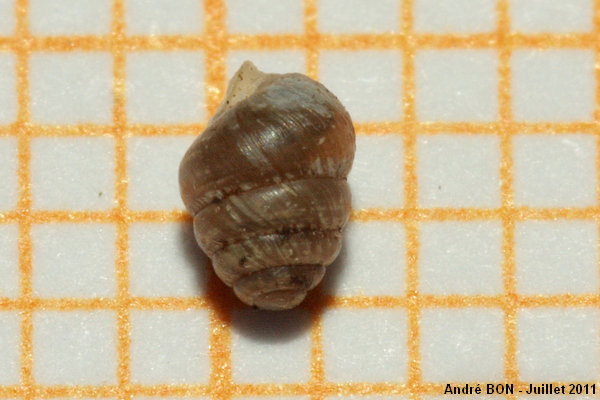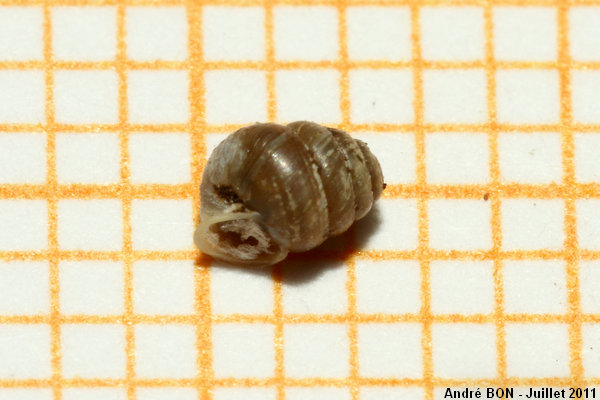


| Common Chrysalis Snail (Lauria cylindracea (da Costa, 1778)) |



|
|
Scientific name: Lauria cylindracea (da Costa, 1778) Common name: Common Chrysalis Snail French name: Maillot commun Order: Stylommatophora Size: Length: 3-4 mm; Maximum diameter: 1.8 mm. Habitat : Forests, meadows, rocky places with a preference for not too damp habitats. On moss, under stones, on walls and on tree bark, often under Common Ivy (Hedera helix). Food: Detritivorous. Reproduction : Cross-fertilizing hermaphrodite. The Common Chrysalis Snail is ovoviviparous. It does not lay eggs. Hatching happens inside the mother's belly. So the Common Chrysalis Snail directly gives birth to juveniles showing 2 to 2.5 whorls. Geographic area: Western Europe, restricted inland to the areas west of the Rhein valley, coasts of Scandinavia, southern Europe east to the Caucasus and to Lebanon, Arabic Peninsula. |
The Common Chrysalis Snail shows a spiral shell with 5-6 whorls. The diameter reaches its maximum on the last whorl. The shell is brown, translucent, shiny and weakly striated. The opening lip is white and out-curved. The body is dark with paler lateral sides and under side. The tentacles are very short. The Common Chrysalis Snail moves with its shell held in almost vertical position. Lauria sempronii is a slightly smaller size (maximum 3.2 x 1.5 mm). It shows a lower number of whorls and the opening lip is not out-curved. The Moss Snail (Pupilla muscorum) differs by the general shape of its shell which quickly reaches its maximum diameter (at about one third of its length). Then the general look is rather cylindrical. The diameter of the Common Chrysalis Snail's shell continuously increases from whorl to whorl. |
| [To know more about the Common Chrysalis Snail] [Next picture] [Top] |

|
These Common Chrysalis Snails were found in the litter. The out-curved edge of the opening is clearly visible on this picture. |
| [To know more about the Common Chrysalis Snail] [Next picture] [Previous picture] [Top] |

|
I find a shell size of 3 x 1,9 mm. |
| [To know more about the Common Chrysalis Snail] [Previous picture] [Top] |

|
There is normally one tooth next to the opening lip. It seems to me that we can guess it on this picture. |